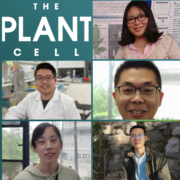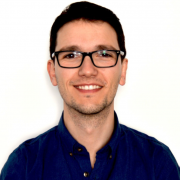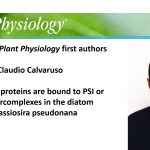Informational Interview: Plant Diagnostic Clinic Director at Colorado State University, Ana Cristina Fulladolsa, PhD
Informational Interview by Jennifer Rushton, ASPB Conviron Scholar
How did you get involved in a career in plant science? Background
“I always knew I liked plants, but I was never a plant lover. I grew up in the city but got the chance to visit my grandmother is a rural area and always thought agriculture was so important. I knew I liked biology and genetics and so the program kind of feel into my lap. I went to Unversidad San Carols in Guatemala, pursing a degree in agronomic engineering. I liked the program because I was an engineer, I was exposed to many different types of classes, basically everything that involved agriculture…my last year of undergrad I had to do a one year internship which was a research based program. I focused on developing tomato varieties resistant to different pathogens, but mostly worked on tomato in fusarium—developing a marker for screening germplasm. One of the coordinators of this program was from Madison, Wisconsin, and. Would travel there sometime to use their equipment to perform my work. As my undergrad ended, I decide to apply to grad school, not necessarily interested in plant pathology but breeding program. But, when looking at school, the woman in charge of recruiting graduate students at UW convinced be that their program would give me everything I wanted, and it did. I worked under Amy Charowski with PVY—which included diagnostics. Creating a cheaper version of ELISA for more user friendly easy detection of the virus. From their I continued my post doc with Amy as she moved to Colorado State University. My first year as a post doc in the spring of 2018, a position opened up for the Plant Diagnostics Clinic and I took the opportunity”
What are the key functions of the Plant diagnostics clinic?
“Service, education and research are the 3 main goals of the clinic. We are providing the community with service by giving them the opportunity to send us samples of unhealthy plants. Farmers, homeowners, Master Gardeners and more send us sick samples and we use various lab techniques to diagnose them—ranging from microscopy to PCR to ELISAs. We want to provide them with a local service they know they can trust us to give them and answer and guidance. We are also part of the larger plant diagnostics community and keep in touch with other land grant university’s and neighboring states to manage the spread of diseases and keep each other informed with protocols and findings.”
What is the like to communicate with the plant community on different levels?
“Communicating science isn’t the challenge, people trust you–people have had plants decades, so they can be very concerned so you have to be prompt, assess their level of concern, and decide how much to tell them and explain–what you did to the sample to diagnose it or results, what will happen, what they should do. Abiotic disease a challenge because you may not know the full story of their plants. I try not to overwhelm them with information, and only tell them what they need to know, but telling someone they need to take their whole tree down is hard. And so we try to standardize results with a final report but talking to them on the phone is the most important and best way to communicate”
What are your biggest challenge as the director of the PDC?
“When becoming the director of the clinic in 2018, nothing was handed to be and I was kind of thrown into it. The way to become a better diagnostician is with practice, and so every sample that would come in would be a learning experience for me—you have to know about many plants and their pathogens, you don’t just focus on one like you would in grad school. So learning how much time to spend on a sample was important, because I wanted to help everyone. And then I learned that it was okay to ask other for help. The National Plant Diagnostics Network was a great resource. You can ask other people for protocols and help in fields you may not know much about—and that’s something I love about this diagnostics community is that it is all a joint effort. Once I learned that that expanding my network was very important, I would say managing the clinic may be the hardest part. Using everyone’s skillset to optimize the way we function as a clinic. No one teaches you have to manage in school—throughout my process I was able to mentor multiple undergraduate students as well as being a teaching assistant but becoming a team to face bigger challenges is something I have been working on.”
What are your goals for the future of the clinic?
“In the next three years we will be moving to Denver to expand our lab and be a part of the Ag education program at CSU. This will give the opportunity to grow as a team and a resources for the community. I want people to know that we are a reliable resource there from them, that can also provide a quick response. I want to develop more rapid techniques in diagnosing pathogens—using things like sequencing, PCR, and other molecular techniques. Also creating resources, which I also plant to translate to Spanish, that people can access online about common diseases and plant health. This why the community can stay informed and easily help their own plants. Ultimately, we want to increase the impact of our service, make our education more accessible and pursue further research in diagnostics. ”









